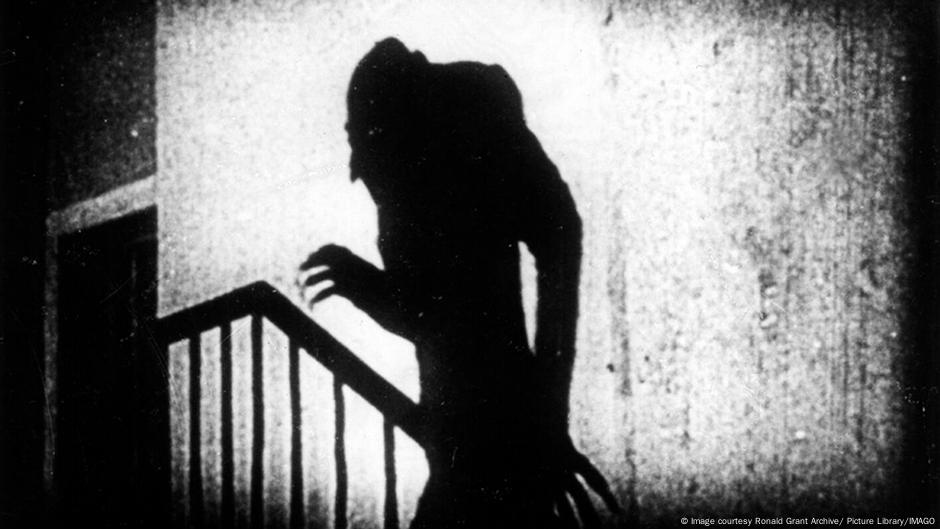Halloween and horror movies: What controlled fear can achieve

The year is 1838. Young real estate agent Thomas Hutter is commissioned to travel to distant Transylvania to meet the mysterious Count Orlok, with whom he is to negotiate a house purchase. On his journey through the Carpathian Mountains, Hutter is repeatedly warned about Orlok. But he remains undeterred. And so he reaches the castle—where the Count himself receives him: pale, cold, and sinister. Too late, the young man discovers that something sinister is afoot in the castle: Orlok is a vampire .
Thus begins the silent film classic "Nosferatu – A Symphony of Horror" by Friedrich Wilhelm Murnau from 1922, now considered a masterpiece of film history. Murnau invented a new cinematic visual language for fear and menace, laying one of the cornerstones of the modern horror genre , which has countless fans worldwide. Even now, at Halloween, many people like to get into the spooky spirit with horror films. But what fascinates them so much about them?
Horror movies - "boot camp" for the soul?It's a bit like riding a roller coaster. Many people enjoy it because they love the thrill – but it takes place within a relatively safe environment. Anxiety researcher Borwin Bandelow explains it this way in an interview with Deutschlandfunk Kultur:
"When you ride a roller coaster, you're led to believe you're going to be thrown off at the next turn. This triggers a significant release of fear hormones throughout your body." At the same time, endorphins are released. "The body thinks, 'I'm going to be thrown off now and seriously injured.' And the endorphins induce pain," Bandelow explained. They also induce feelings of euphoria. Even though you know you're in a certified ride and nothing can actually happen, your brain still reacts to the situation.

Horror films basically work according to the same pattern: We get scared within a safe environment - namely on the sofa or in the cinema seat.
But the horror genre can do more than just entertainment. The American filmmaker Wes Craven (1939-2015) believed that horror films were a " boot camp for the psyche ," a kind of training. "In real life, people are wrapped in paper-thin shells and threatened by real and sometimes terrible dangers, events like Columbine (the 1999 high school shooting). But the narrative form puts these fears into a manageable sequence of events, giving us the opportunity to think rationally about our fears," Craven said.
The science of "leisure anxiety"The Recreational Fear Lab at Aarhus University in Denmark has been studying the phenomenon of "leisure anxiety" since 2020, exploring why people voluntarily expose themselves to anxiety-provoking situations and what effects this has or can have. Among other findings, they discovered that controlled leisure anxiety can positively impact an individual's ability to cope with stress by leading to the development of "strategies for dealing with anxiety and negative emotions," according to Mathias Clasen, co-director of the Recreational Fear Lab. "In other words, it can contribute to personal development."
Clasen is firmly convinced that people who consume horror films, for example, are not merely passive spectators, but employ active strategies "to achieve the right level of fear"—that is, the level of fear at which the greatest possible pleasure is experienced. If the fear becomes too great, the pleasure diminishes.

The intensity with which feelings are experienced varies greatly from person to person. Accordingly, the willingness to expose oneself to horror films also differs significantly. Horror fans, unlike horror haters, expect to "experience enjoyment," according to Clasen. They enjoy "playfully engaging with negative emotions."
Fear as a learning fieldAmerican psychologist Coltan Scrivner distinguishes three types of horror fans: "Adrenaline Junkies" love the thrill, "White Knucklers" experience fear rather than fun but are interested in pushing boundaries, while "Dark Copers" use horror to confront personal existential anxieties. Researchers at the Recreational Fear Lab build on this, but also point out that this field of research is still young and many questions remain unanswered.
One thing is undisputed: fear must be measured in order to serve as a learning tool. "It can easily become too much," says Mathias Clasen. This is a topic that is also relevant at Halloween: some amusement parks offering Halloween programs are therefore setting up special monster-free areas where younger children in particular can have fun without being frightened.
dw





